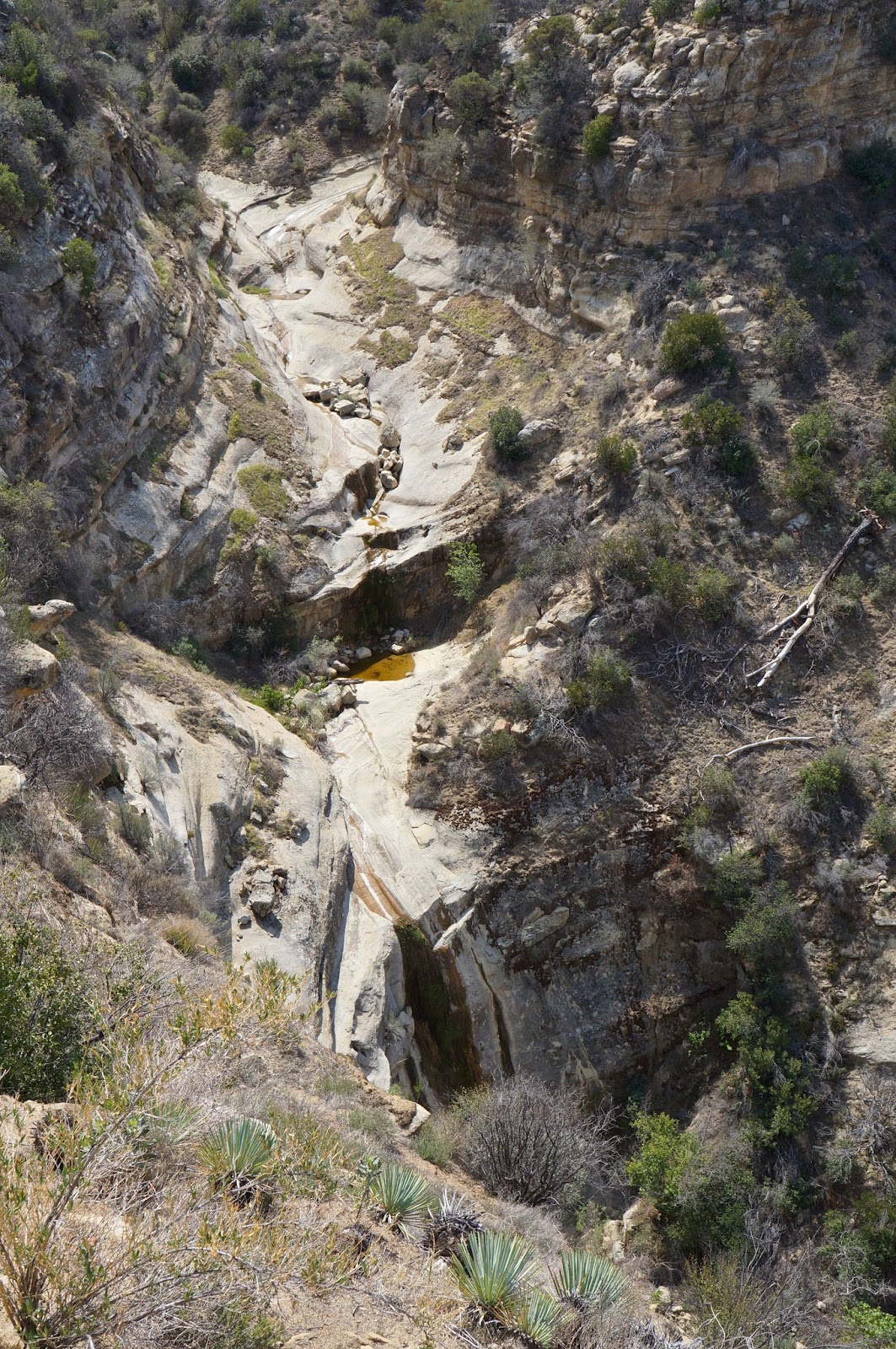Another day spent scouring an untrammeled canyon.
The Sulphur Springs drainage [San Rafael](*not the drainage of the same name off Sierra Madre and Salisbury) caught my eye a few weeks back. Nico told me that Conant told him that there were some real drops in that canyon, and that Sulphur is sometimes used as a shortcut for those escaping the Hurricane Deck, but that was all the information I could glean about the place. I found this amusing because this canyon drains into the Upper Manzana, host to one of the region's most popular trails, and Sulphur Springs is literally just the next canyon west of the Manzana Narrows. Obviously Sulphur is not a going concern. I wasn't doing anything else so I thought I'd go have a look.
The arials of the uppermost portion Sulphur revealed an intriguing landscape of rocky bluffs of tiered sandstone strata channeled with dry watercourses which ceded into the familiar serpentine twists and turns of rock choked drainages throughout the Southern Los Padres. I banged out the miles leading up Manzana and through the Narrows, topping out on the mesa above Alcove Camp in 3:15. From this point it was all new territory. I stood on the rim of a steep drop overlooking a long and wide selection of crumbly slabs which ended in a broad and sandy drainage. In the middle distance that barren stream dissolved into a green haze of thick brush. Far downstream, the two dominant branches of the drainage came together in a clump of trees beneath a narrowing canyon. The dominant landscape feature from this vantage was the epic ridge of the Hurricane Deck.
 |
| In the distance is the Hurricane Deck. Sulphur descends into the clump of trees below and continues from there. |
 |
| The sandy wash, which cedes directly into thick young brush. |
Descending the slabs was blessedly brush free, but it also required concentration. The angle wasn't that bad but the sandy surface of the rock was fairly treacherous. I navigated the descent without incident, coasting into a sandy wash and turning downstream. It wasn't all that long before I was having to bust through ceanothus and young manzanita intermingled with deadfalls and poison oak. Crap. I found, quite by accident, that the density and nature of the brush was pushing me ever more to the right of the branch I was descending. This turned out to be a blessing in disguise because, even though I couldn't see it through the brush, the drainage soon narrowed dramatically and plunged into a huge slide gorge. Staying to the right had led me across the crest of what had started as a small hill, but as the land fell away to my left I started to get glimpses of the gorge I had accidentally escaped, and this small hill became a narrowing prominence which overlooked not just this deep gorge to my left, but also into the northern, righthand branch of this upper part of Sulphur. Finally I stood at the furthest point of this now ridge between two drainages and was able to really see downstream, or at least until the canyon came together and turned northwest. From this vantage it appeared that I was in for some work.
 |
| This is the deep gorge I narrowly missed. I'm okay with that. |
Both upper branches met at a distinct and rocky narrowing. From this point forward the canyon was a narrow mix of brush and creek stones interspersed occasionally with pileups of massive boulders. The twisting nature of the creek limited views, swallowing my back trail and leaving me guessing what was just around the next corner. I proceeded between brush bouquets, ducking under sage sycamores and knotted oaks as the creek sank deeper and the canyons walls climbed higher. I found some creekside caves and terraced bands of rock overhanging the creek bed. At several turns in the middle of the descent I discovered pleasantly shaded and grassy benches along the creek, perfect respites from the persistent rock hopping, deadfall vaulting, brush busting descent.
There was water in the creek, though it was not a real flow of any significance, and at times the water went underground for a time. The only wildlife I witnessed were a few frogs and turtles, a handful of birds. There were numerous animal tracks on the muddy banks of standing pools. Over the course of the descent I identified the prints of raccoon, bobcat, deer, and coyote. There were prints of a single medium sized bear, and those of a thirsty mountain lion, deeply imprinted paws side by side in the mud at the lip of a small pool. I did not identify any presence of man or his leavings until about the last half mile of the descent.
The last few miles of creek were identical to the preceding ones, monotonous really. I just took it for what it was and rambled on. Aside from amounting to a nice and varied collection miles, this day was much like many days I've had in similar settings throughout our forest. I took time to stop and enjoy the little things and appreciate being in a remote place, though there aren't any truly remarkable or particularly beautiful aspects of Sulphur Springs Canyon that are deserving of note.











































